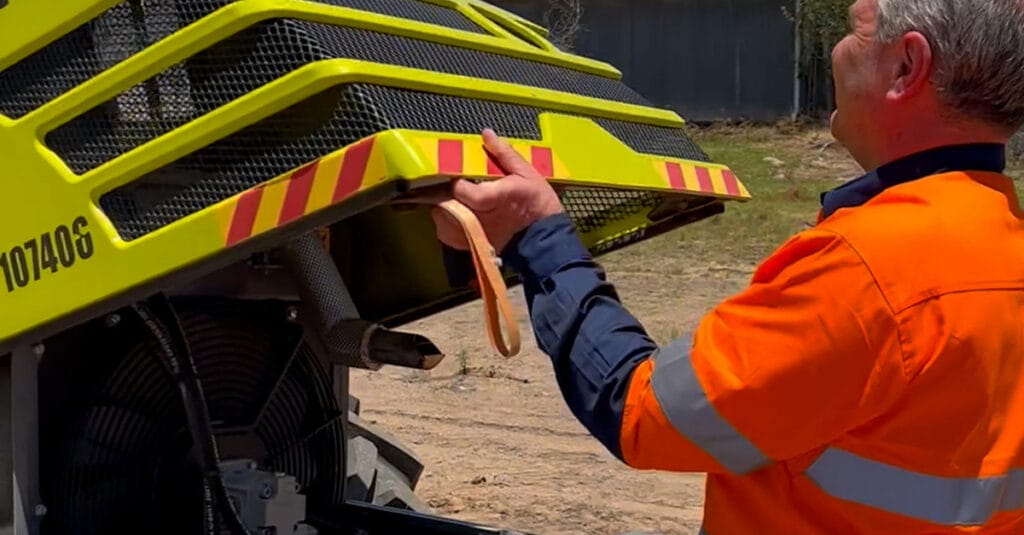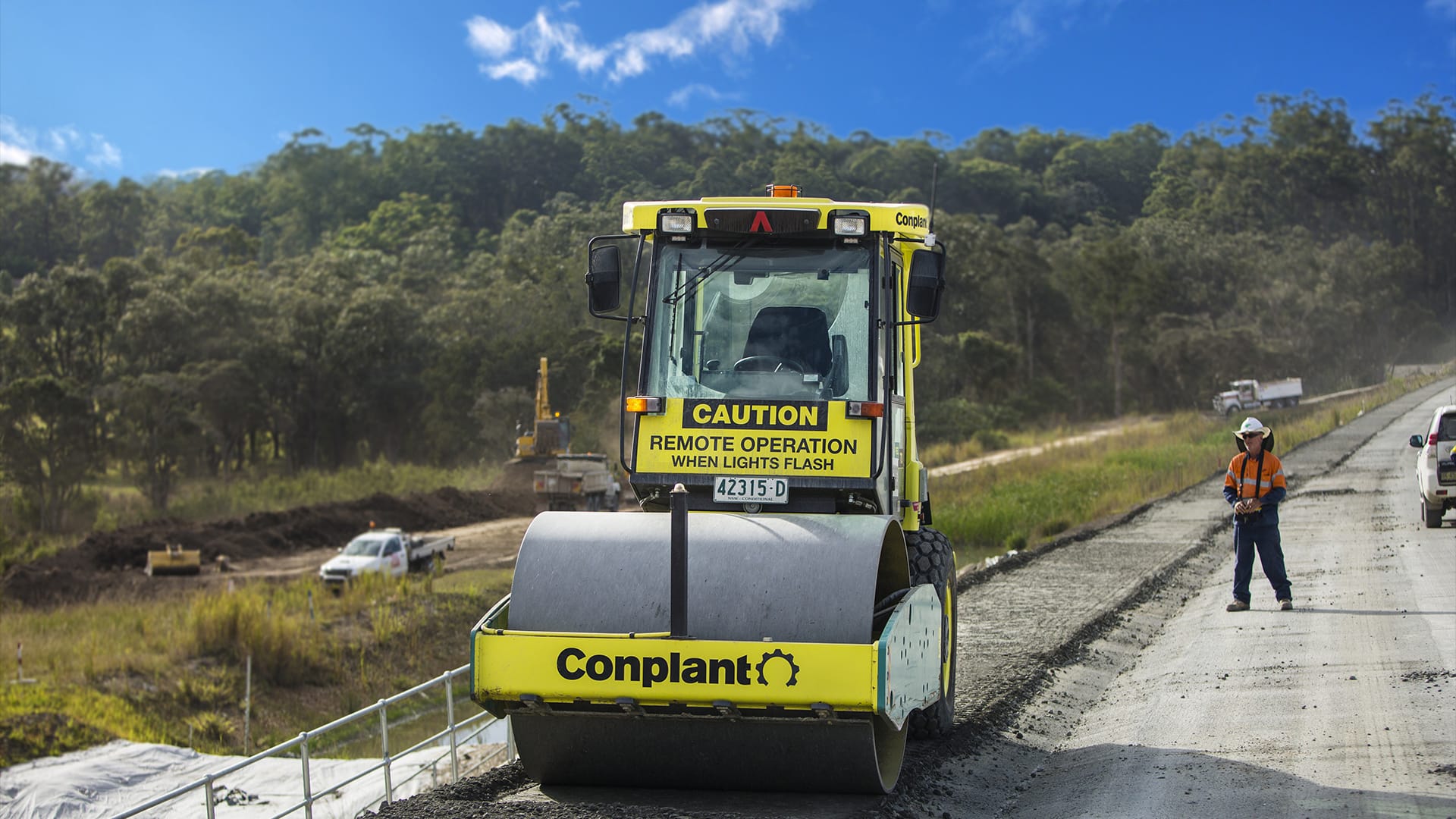How to Handle Construction Equipment Breakdowns
Precision and productivity are essential in construction. Equipment breakdown can throw the ultimate spanner in the works – both literally and figuratively.
Maximising construction equipment uptime is vital to completing projects on time and within budget. But even the most reliable machinery can have unexpected breakdowns, leading to delays, increased costs, project creep, and potential safety hazards on site.
To navigate this, it’s vital to know how to handle construction equipment breakdown and the importance of a quick response, along with common causes and the role of equipment management.
The Importance of Quick Response
When it comes to handling equipment breakdown, time is the most important factor to consider. Any delay in operation can ripple through the entire construction schedule, causing project setbacks, inflating costs and even compromising worker safety.
By responding quickly to broken construction equipment, you can diagnose the issue and determine the best approach, minimising site downtime and helping you stick to project timelines.
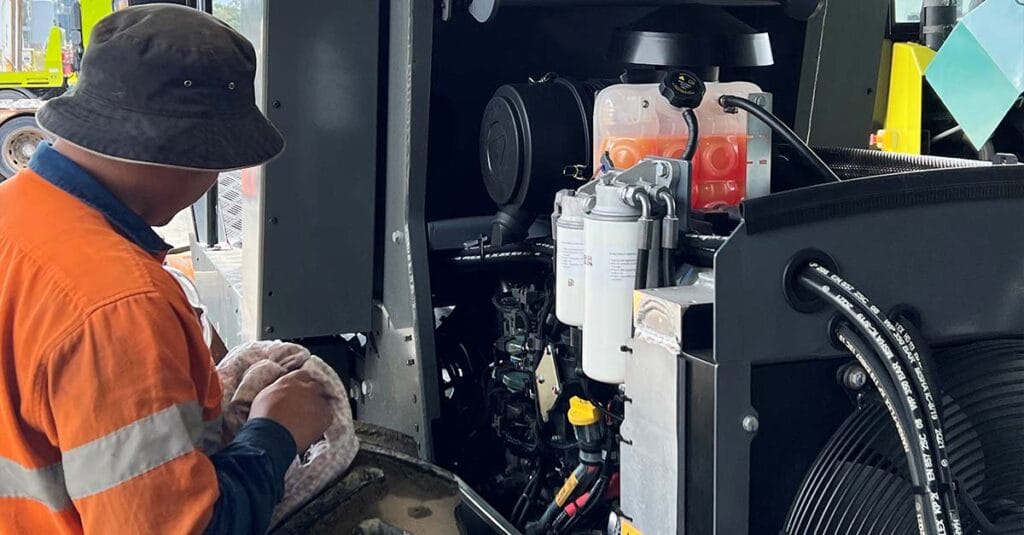
Identifying Common Causes of Equipment Breakdown & How to Prevent Them
Rather than relying on hindsight and countless construction equipment breakdowns, understanding how equipment breakdowns happen in the first place is the first step toward effective prevention.
Common breakdown causes include:
- Poor Maintenance Practices
Failure to conduct regular servicing and equipment inspections, or not lubricating heavy machinery frequently enough, is one of the leading causes of equipment breakdown. But it’s also the easiest to rectify.
Staying on top of maintenance schedules and effective equipment management practices are the key to ensuring equipment longevity and ongoing performance.
- Misuse and Operator Error
An all-too-common issue, but one worth repeating. Equipment misuse or failure to follow manufacturer guidelines is almost guaranteed to result in equipment failure. To combat this, it’s strongly advised that you implement equipment asset management programs to train and educate operators before using any construction equipment.
By equipping operators with a thorough understanding of operational protocols, these programs act as a proactive defence against equipment misuse and operator error, while safeguarding machinery, workers and project progress.
- Environmental and Working Conditions
Operating in challenging environments like dusty or wet conditions, can significantly expedite the deterioration of construction equipment. Variables such as fluctuating temperatures and exposure to corrosive chemicals can further compound the risk and accelerate equipment breakdowns.
These challenges can be mitigated by robust equipment management. In other words, proactively identifying and addressing environmental risks, fortifying equipment resilience, and prolonging operational lifespan.
Preventive Measures to Avoid Future Breakdowns
When you’re racing against the clock to finish a project on time and within budget, it might seem counterintuitive at first to spend time on preventive measures. However, in the quest to maintain peak performance, preventive measures are a necessity.
Routine and scheduled maintenance plays a crucial role in avoiding equipment breakdown. By adhering to a well-planned maintenance schedule, issues can be detected and rectified in their early stages, significantly reducing the likelihood of unforeseen breakdowns and potential disruptions to on-site operations.
Immediate Steps to Take When Equipment Breaks Down
The worst thing you can do when faced with broken construction equipment is panic, or ignore the issue and not communicate it. That’s where established procedures can make a difference, so everyone knows what to do when things go wrong.
We recommend incorporating these five steps into any procedural plan to ensure everything runs smoothly when mishaps occur.
- Stop Using the Equipment
If a piece of machinery encounters a mechanical fault or a breakdown, even if it seems inoperable, there’s always the potential for it to move unexpectedly and make the issue much worse.
The simple fix? Turn the machine off.
This should be the first step in operator safety and the first emergency procedure you should have in your management plan.
- Isolating and Assessing the Issue
No matter how many site workers you inform, text messages and emails you send out, nothing compares to demarcation and containment of a potentially hazardous area.
To do this, start by placing high-visibility cones and bollards at a safe distance from the malfunctioning machinery, and consider utilising guy lines or ropes if available.
This is just a preventive measure to ensure nobody is going to accidentally step into a dangerous zone when equipment or machinery has broken down. Qualified personnel can assess the issue from there.
- Contacting Support and Repair Services
Site managers and service technicians will need to listen to what the machine operators have to say. They work with the equipment every day and will have a better understanding of what the issue may be.
Once you have all the information on hand, you’ll know who to contact and what repair services will be required to rectify the issue to get your site moving again.
- Fixing Equipment Breakdown
Once notified of faulty machinery, a qualified service technician will arrive onsite, assess the issue, and begin repairing the malfunctioning machine. Depending on the extent of the problem, the repair may take a matter of minutes or stretch into a few hours – especially if parts need to be replaced.
With the largest parts inventory in Australia, and the most reliable service technicians who receive unmatched training and support from original equipment manufacturers, we’ve got you covered Australia-wide.
No matter where you are, if you need to get your site and machinery back up and running, check out our equipment service offering, and we’ll sort you out in no time.
- Reducing Equipment Breakdown Risks
Unfortunately, equipment breakdown is part and parcel of using heavy machinery in harsh Australian environments. But mitigating the chances of them occurring in the first place is well within reach.
It’s important that routine maintenance schedules are being undertaken and completed. This is the first barrier of defence against a future breakdown and ensures that your timeframes for an important job don’t unexpectedly blow out from an issue that could have easily been avoided.
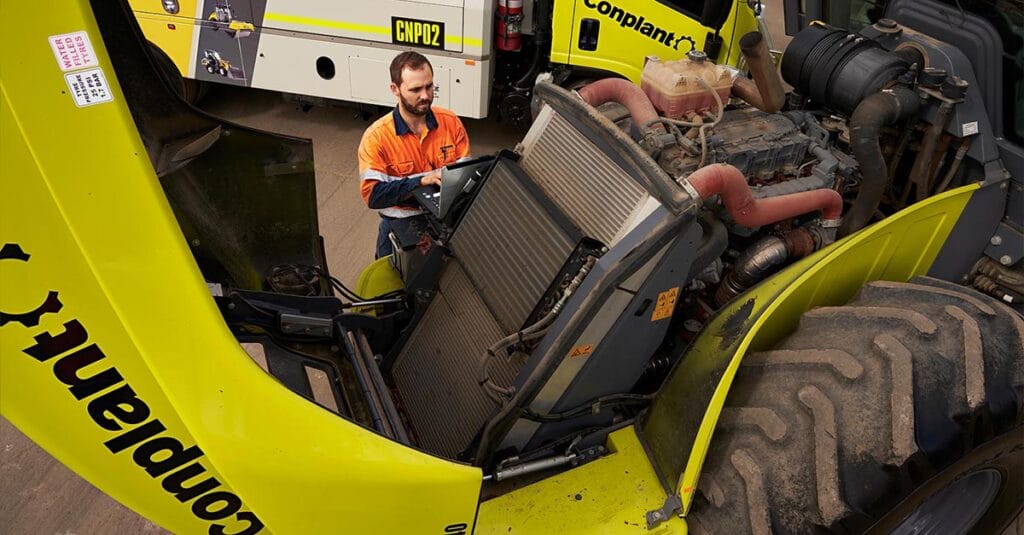
What Does Preventive Maintenance Involve?
Scheduled Inspections: Regularly inspecting equipment components helps identify wear and tear early, leaks, and other signs of deterioration, allowing you to take action before it becomes a serious problem and initiate timely repairs.
Lubrication: A simple preventive measure that only takes a minute, lubricating moving parts is the key to reducing friction and subsequent wear, extending the lifespan of components, and preventing construction equipment breakdowns from happening in the first place.
Component Replacements: Promptly replacing worn-out parts such as rubber tracks, pads, buffers and more, before they fail, can prevent larger issues and keep the equipment running smoothly.
Calibration and Alignment: This one will require you to set a schedule for routine maintenance, however, ensuring equipment is calibrated and aligned by an equipment professional will greatly reduce strain on components and minimise equipment breakdown.
Preventive Measures to Avoid Future Breakdowns
The primary benefit of preventive maintenance ultimately comes down to enhancing reliability. By consistently maintaining each asset in optimal condition, the likelihood of breakdowns diminishes significantly. This proactive approach substantially reduces the frequency of equipment failures and minimises the need for emergency calls.
Three Steps for Effective Preventive Maintenance
- Regular Inspections and Maintenance
To keep your construction equipment in good shape, just think of it like going to the doctor or auto shop. Set a schedule for regular check-ups, monitor maintenance activities, just like keeping yourself hydrated, make sure to keep moving parts on machinery well-lubricated, and replace any worn-out parts as needed.
This will greatly help to prevent your equipment from breaking down.
Another tip is to act on and address minor issues as soon as they arise. This will prevent them from escalating and turning into a major equipment breakdown either further down the line or in a matter of minutes.
- Training and Education
Allocate resources towards thorough training programs for equipment operators as a proactive measure to prevent equipment breakdowns entirely.
Prioritise equipping workers with in-depth knowledge of correct operational methods, safety procedures, and regular maintenance routines tailored to equipment and heavy machinery used on your worksite.
It’s important to go as far as outlining the acceptable payload of site dumpers, the role amplitude and frequency play in compaction, the difference between roller types and so on. This level of information makes a difference so make sure you incorporate it into your training program.
Whether you need this information or anything else to do with site dumpers, rollers, parts, servicing, and even hiring, head to our FAQ page for all the insights you’ll need.
- Investing in Quality Equipment
Cutting corners with old, cheap, or unsuitable equipment will inevitably create bigger problems in the long run that outweigh any short-term savings. Do yourself a favour and seek out trusted manufacturers, with equipment suited to your chosen applications, to reduce the likelihood of frequent breakdowns.
Top-quality machinery is more likely to withstand the rigours of construction work and variable conditions, even in the harshest environments. Plus, if a part does need to be sourced for repair, it’s better to know that it’s available and accessible when you need it – rather than waiting weeks or months for that single part to arrive.
If you’re unsure if you’re purchasing or renting high-quality and reliable compaction or construction equipment in the first place, make an informed decision and with no-nonsense, dependable advice from our team at Conplant – we’re here to help.
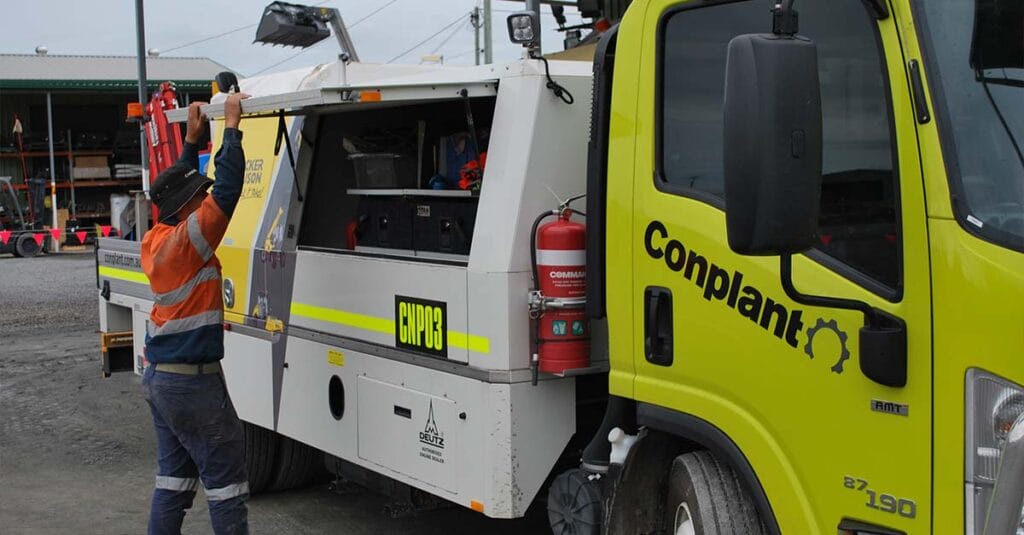
In Summary…
Construction equipment breakdown can be a significant roadblock on construction sites, causing extensive work stoppages, project delays, and unexpected expenses.
Particularly, when serious issues like hydraulic or engine failures occur, which demand immediate attention before work can resume – blowing out projects even further!
However, with a well-thought-out strategy in place and implementing effective protocols for handling sudden breakdowns, you can spring into action and respond to unexpected mechanical failures, ensuring a safe and prompt return to work for everyone.
We’ve built a reputation for ensuring construction projects are completed on time with site safety top of mind. We’ve been doing it for over six decades with a track record for helping countless projects big and small right across Australia.
Need a hand with parts or servicing for compaction equipment? Get in touch
